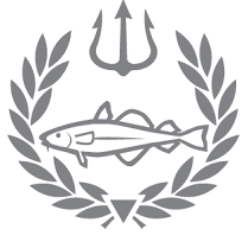 Today started off with food prep again, but not for the GOT…today I prepared food for the Penguins! There are three types of penguins in the exhibit: Rock Hoppers, Africans, and Little Blues. All three species eat smelt, a small arctic fish. Some smelt are injected with water to keep particular penguins hydrated. After the food was prepared, we pulled on wetsuits and got into the nippy water (it is 20 degrees colder than the GOT!). I followed Paul, the exhibit head, around on the morning feeding and the thing he warned me about most was that penguins are unpredictable animals.
Today started off with food prep again, but not for the GOT…today I prepared food for the Penguins! There are three types of penguins in the exhibit: Rock Hoppers, Africans, and Little Blues. All three species eat smelt, a small arctic fish. Some smelt are injected with water to keep particular penguins hydrated. After the food was prepared, we pulled on wetsuits and got into the nippy water (it is 20 degrees colder than the GOT!). I followed Paul, the exhibit head, around on the morning feeding and the thing he warned me about most was that penguins are unpredictable animals.
We had to keep at least a 12” distance between any penguin and our heads and walk through the exhibit with fingers in palms to avoid a painful bite. My wetsuit had a small loop on the back that was a toy for one penguin, Benguela or Benny for short, who nipped, twisted and yanked on it consistently during the feeding. Every penguin has a color-coded beaded tag on one of its wings for identification. Females are tagged on the right and males on the left. At feeding time, a record of every fish that each penguin eats is kept, along with notes on behaviors and if the penguin is in a cave or sitting on eggs.
I got to see two eggs in the African exhibit, and a behind the scenes look at a Little Blue nest hidden inside one of the rock islands. Penguins are unique birds in that they keep the same mate for their entire lifetime. After the feeding, each penguin ate around 10 fish, we got out the scrub brushes, hoses and virkon (a cleaning agent neutralized by water) and scrubbed away at the rock islands to clean them of guano- a.k.a. penguin poop. After this first morning session, the staff records the weight of and how many fish were eaten, the temperature and humidity in the exhibit, and any other notes about how the feeding went.
I was lucky today because I was invited to do the 1:15 GOT dive between penguin feedings. After that it was time for the 2:30 feeding where I shadowed Logan, a college student at Wellesley and Paul in the exhibit. She taught me how to feed the Rock Hoppers! You have to present the fish head first to the penguin and then guide it into the beak. The penguin will then swallow it whole from there. With some older penguins, you need to push the fish to the back of its throat so it can swallow it easier. My biggest accomplishment was being able to successfully feed Penguino, a tough girl penguin who totally shreds up the fish with her beak then spits it out, thirteen fish! After the feeding, recording, and clean-up in the penguin locker room (no rock scrubbing on the second feeding), the day was done.







